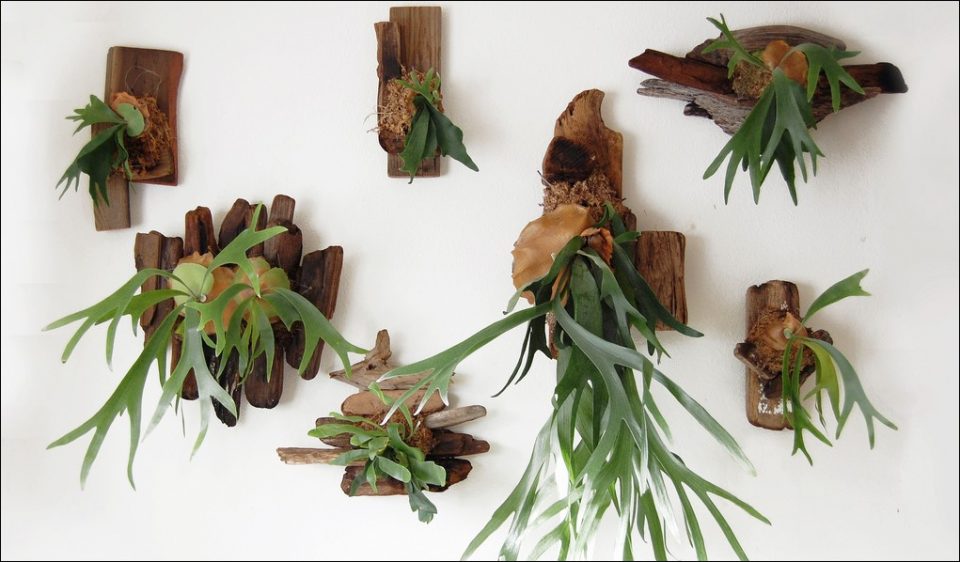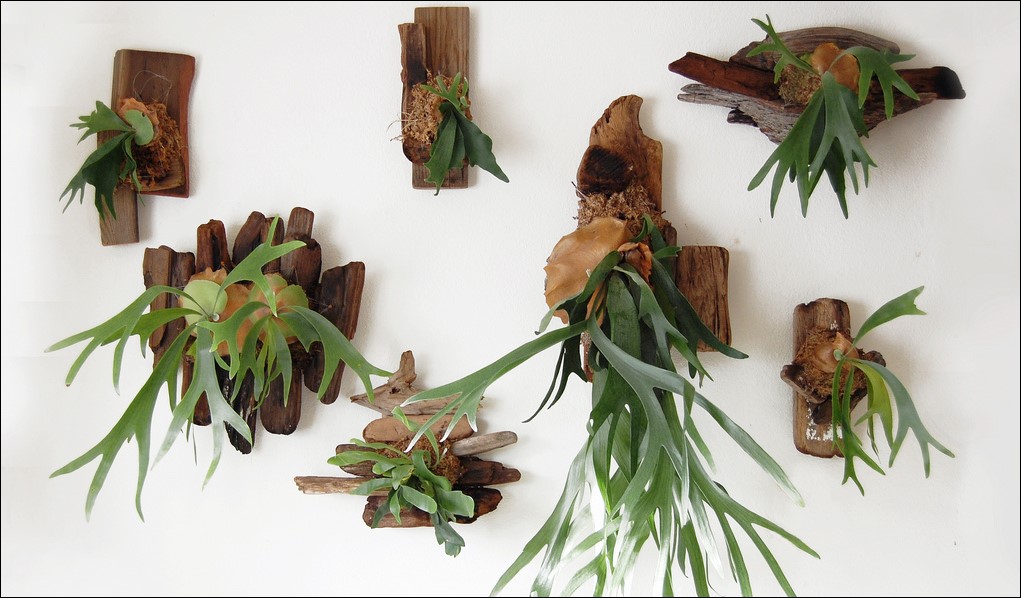Staghorn Fern is native to Asia and Australia and they are one of the most beautiful tropical houseplants. The staghorn fern belongs to the Polypodiaceae family that has 18 species in total but the staghorn fern is the most popular species. The botanical name of this plant is “Platycerium” and the other most common name for this species is “Elkhorn fern”

Staghorn fern is epiphytic and their leaves have two distinct types of leaves.
- The first type of leaves are small and flat that takes up most of the nutrients and water.
- The second type of leaves are green and pronged, starting from the base and reach up to three feet in height.
They are non-toxic and non-flowering plants that can be hanged in a container easily. There are different types of staghorn fern plants but the process to grow all the plants is almost similar.
How to Grow and Care for Staghorn Plants?
Staghorn Ferns are really good plants that can increase your living room’s attrition due to its beautiful ferns and also due to the way they are grown. For good staghorn fern care and growth you need to make sure that you mimic the tropical conditions at your home by providing it with the exact amount of indirect sunlight along with constant moisture. Your plant will grow into a beautiful masterpiece if you take care of some requirements to grow this plant.

- Soil: In the starting, you can use moist soil and the normal potting mixture but you need to mount the plant when it is matured. As you know they are epiphytes, they grow on the sides of trees and other plants in the wild conditions. You have to provide them with the same condition in your home for optimum growth. For mounting the plant you need to have some peat, compost, moss and some other organic material that can be used as the base of the plant.
- Water: You need to take care of the water requirements of this plant for the best results. They need very frequent watering sessions but make sure you give time to the base to dry out around once a week in summers and once in two-three weeks in winters. To water it easily you can take out the plant from the mounting and soak it in a sink for at least 15 to 20 minutes. Let the plant drip dry and then you can put it back.
- Light: In tropical conditions, the plant is grown clinging to the trees. The three and the leaves block out most of the direct sunlight and you have to provide the same condition in your home also. You can also use artificial light at your home but the most effective way is to keep it near a window where no direct sun rays come over the plant and it can enjoy the warmth of the sun.
- Temperature: The staghorn fern can grow very well in normal household conditions. Just remember that the plant belongs to the tropical climate conditions where it grows very well below 100 degrees Fahrenheit and at least 50 degrees Fahrenheit. Provide a similar temperature at home for good growth of the plant.
- Humidity: The tropical forest area is humid and the staghorn fern loves humidity. You can mimic the humid conditions at home by placing them near the bathroom and the kitchen. If you want to keep it near the window and your plant is not getting enough humidity, you can use a humidifier for this purpose.
- Fertilizer: For better growth of your staghorn fern you can use a well-balanced and water-soluble fertilizer once every month. During the spring to summer, the plant experiences good growth and you can use that fertilizer at that time. The frequency of fertilizing the plant could be slowed down in the winters.
Also read: Hoya Compacta: Know how to Grow and Care for this Hindu Rope Plant
Staghorn Fern Propagation
The process of staghorn fern propagation can be achieved through spore or division. The most common way to propagate the plant is by dividing a large mature staghorn fern into small chunks, which may include some leaves and some root balls. You need to make sure that you provide a moist and warm atmosphere where they can grow independently. It may be possible that your newly made plant takes a little while to grow, so do not get disheartened if your plant doesn’t grow as you wanted it to grow. It may take around three to six month for the plant to germinate the spores. Once you see some real leaves, you may use small containers for staghorn ferns and transplant them to those containers.
What are Staghorn Fern Pups?
Staghorn fern pups are little plantlets that can grow into fully grown plants one day. They are attached to the lower side of the plant under the dry shield ferns. You can use the pups to propagate the plant as it is the best method of propagation. You can remove the pups by using a sharp knife from the brown while ferns along with the roots attached to that part. Then pot that cutting into a separate container.
How to mount Staghorn Fern?
For staghorn fern mounting you can use a variety of things like you can use a basket to mount it on the wall, you can use a tree, you can use a piece of wood or some pot that can take the weight of the pants when mounted. You need to make sure that the plant is protected and for safety purposes, people choose wired baskets to mount the plant. Just make sure that it receives an adequate amount of warmth, humidity and water at the mounting place for good growth.
Why is Staghorn Fern so expensive?
Staghorn fern is a rare plant species and they require optimal amounts of care for good growth. They are big beautiful plants but you need to take care of their growth requirements like favourable temperature, humidity and fertilizers during the growth period.
Frequently Asked Questions
Q1: How much sun does a staghorn fern need?
They need bright but indirect light of the sun but avoid the direct rays as it can destroy the foliage.
Q2: Are banana peels good for staghorn ferns?
A few banana peels are a good source of potassium and phosphorus for the staghorn fern.
Q3: How do you get rid of staghorn fern pups?
Wait for the pup to be at least inches and then use a sharp knife to cut it away from the spot where brown shield fronds are attached along with the same roots.
Q4: What’s the best fertilizer for staghorn ferns?
Use a water-soluble and balanced fertilizer during the growing period once every month.

